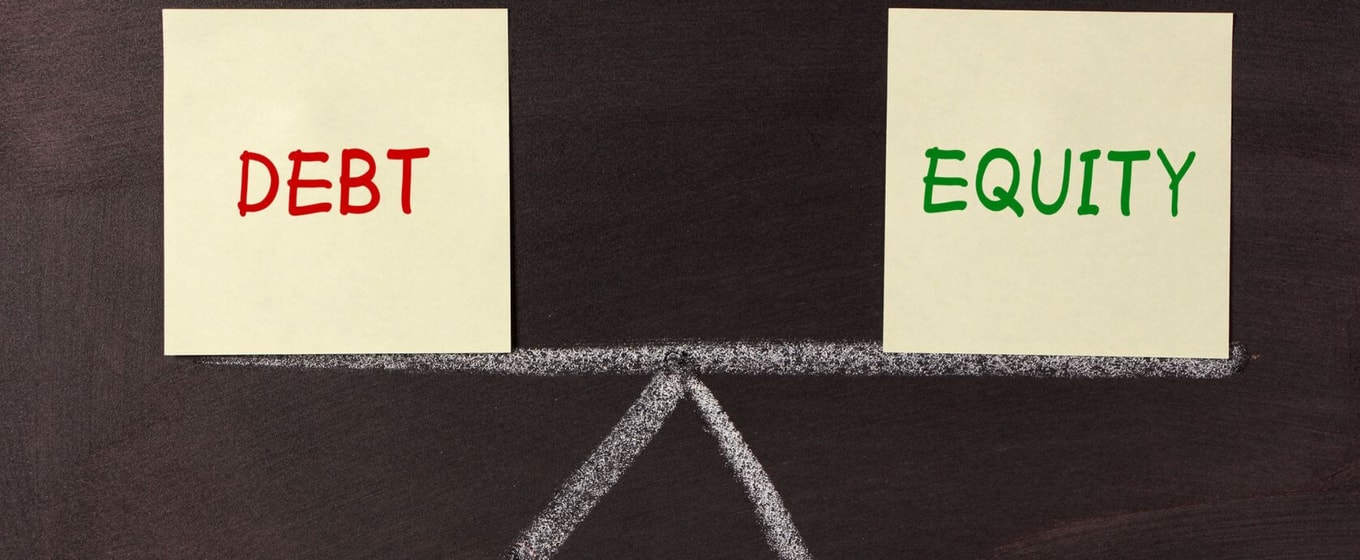The debt-to-equity ratio is a number that helps you understand how a business is financed.
It compares the company’s total debt to its total equity (what shareholders own). This ratio shows if a company relies more on borrowing money (debt) or on money invested by owners (equity).
How to calculate debt-to-equity ratio
The formula for the debt-to-equity ratio is simple:
Debt-to-equity ratio = Total liabilities ÷ Total equity
Let’s say a company has a debt-to-equity ratio of 1. This means that the company’s debt and equity are equal. In other words, shareholders and creditors have equal investment in the business.
A ratio of 0.5 means the company has twice as much equity as debt, so shareholders provide most of the funding. In this case, 66.7% of the company’s investment comes from shareholders, while 33.3% comes from creditors.
The ideal debt-to-equity ratio varies by industry, but in general, a lower ratio means the company is more stable because it doesn't rely too much on debt.
Why is the debt-to-equity ratio important?
The debt-to-equity ratio helps you understand how risky a company is.
If a business has a high debt-to-equity ratio, it relies heavily on borrowing. This can be dangerous if the company can't repay its debts or if interest rates go up.
A low debt-to-equity ratio means the company uses less debt, making it more financially secure.
Why debt-to-equity ratio matters for investors
Are you in debt but want your company to continue growing? Finding a debt-to-equity investor may be a way forward, but it could be a challenge.
Investors look at the debt-to-equity ratio to figure out if a company is a good investment.
Naturally, investors are cautious about investing in businesses that are laden with a considerable amount of debt. Therefore, attracting an investor who’ll invest in your company in exchange for equity in order to pay off debts can be tricky.
If a company has a high debt ratio, it might be seen as risky because it relies too much on loans. Investors usually prefer businesses with a low or balanced debt-to-equity ratio, as this means the company is less likely to struggle with debt.
To attract a backer, you’re going to have to present a very strong business plan to ensure that they’re convinced that after the debt has been settled there’s a viable business. Crucially, you should also set out plans that make it clear the business will not get into bad debt again.
What is a good debt-to-equity ratio?
A good debt-to-equity ratio depends on the business, but a healthy ratio is usually between 1.0 and 2.0. A ratio of 1.0 means the business has equal amounts of debt and equity, which is balanced.
However, some industries with high upfront costs (like construction or manufacturing) might have higher ratios.
How to interpret the debt-to-equity ratio
The debt-to-equity ratio tells you how much of a company is financed by debt versus equity. Here’s how to understand different ratios:
- A ratio of 2.5 means the company has 2.5 times more debt than equity, which could be risky.
- A ratio of 1.0 is balanced, meaning the company’s debt and equity are equal.
- A ratio of 0.5 is low, meaning the company has more equity than debt, which is usually a good sign of financial health.
The debt-to-equity ratio is an important tool for understanding a company’s financial health. A healthy debt-to-equity ratio means a business isn’t relying too much on debt. The ideal debt-to-equity ratio will depend on the industry, but keeping it below 2.0 is generally a good sign.
If you’re not sure about your business’s debt-to-equity ratio, ask an accountant to help you calculate it. Knowing your ratio can help you make smart decisions about borrowing money and growing your business.
Your common questions answered
Debt is money a company borrows that it must pay back, usually with interest. This includes loans and bonds. Equity is money that people invest in a company in exchange for ownership. Shareholders own part of the company, and their investment can grow if the company does well.
Yes, the debt-to-equity ratio can change. It may go up or down based on factors like how much debt the company has, how much equity it raises, or how well the company is doing financially. Companies should check this ratio regularly to understand their financial health.
A good debt-to-equity ratio is usually between 1.0 and 2.0. This range shows that a company is using both debt and equity in a balanced way to grow. However, the "ideal" ratio can vary depending on the industry.
Yes, a debt-to-equity ratio of 0.5 is good. It means the business has twice as much equity as debt, which indicates strong financial health. This is a safe position because the company isn't relying too much on borrowing.
A debt-to-equity ratio of 2.5 means the company has 2.5 times more debt than equity. This is considered high and could be risky because the business relies heavily on borrowed money to finance its operations.
Yes, a 50% debt-to-equity ratio is good. This means the company’s debt is half of its equity, showing a balance between borrowing and ownership. It’s a sign of financial stability.
Yes, a debt-to-equity ratio of 1.0 is good. It shows that the business’s debt and equity are equal, which means the company has a balanced approach to financing with both debt and investor funds.
Several things can affect the debt-to-equity ratio. These include market conditions, interest rates, industry norms, and the company’s plans for growth. For example, if a company is expanding quickly, it might take on more debt, which changes its ratio.
A company can improve its debt-to-equity ratio by paying off debt, raising more money through equity (like selling more shares), or making more profits to keep more earnings. Reducing debt can help make the company more financially stable.
Startups often have higher debt-to-equity ratios in their early days because they need money to grow. A good ratio for startups can vary, but keeping it below 2.0 is usually a safe bet to avoid too much debt.
Yes, a company can have a negative debt-to-equity ratio if it owes more money than it owns. This situation can happen if a company has lost a lot of money. A negative ratio is a sign that the company might be in financial trouble.
Do you have a question that you can't see? Check out our FAQ page.






These cookies are set by a range of social media services that we have added to the site to enable you to share our content with your friends and networks. They are capable of tracking your browser across other sites and building up a profile of your interests. This may impact the content and messages you see on other websites you visit.
If you do not allow these cookies you may not be able to use or see these sharing tools.